The First Language
The Goddess of Quintessence: Sound Art, Education, Symbols and Signs, Spirituality, defaultIn Search of the Mother Tongue
Script of Neolithic Shamans Research by Nataša Pantović

The Archeological Hacilar Settlement of Neolithic Europe dated to 6,000 BC and the Stamps
Sounds have Shapes that are Numbers
“Sounds have shape,” explains Professor John Aston, from Cambridge’s Statistical Laboratory. “As a word is uttered it vibrates air, and the shape of this soundwave can be measured and turned into a series of numbers. Once we have these stats, and the stats of another spoken word, we can start asking how similar they are and what it would take to shift from one to another.”
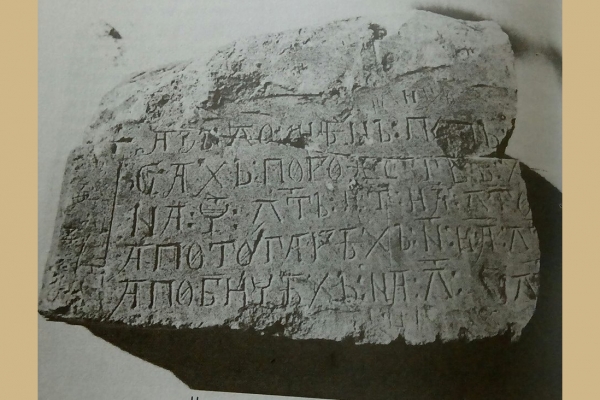
Danube Region Script 4,000 BC
Researching Symbols, Sounds and Shapes of the Supreme god
we acknowledge that -
For the last two thousand years, it was the prayers that were translated by hand under a candle light, and passed from one researcher to the other, and within the Christian worlds, it would have been the Lord's Prayer passing the ancient wisdom of Gods from one mystic to the other.
The earliest recorded monotheistic non-Christian prayer, liturgy, dates back to the Babylon time, see aXeN and Athena Caanan Tablets or Ancient Egyptian Amorita Letters.
The earliest rituals associated with the offering of wine, dates back to the cult of god DioNisus in Ancient Europe
A fairly early monotheistic notion, of one and supreme divine, was evident within the development of the languages, and it in its puzzling complexity narrates the mystical story of the Holy Trinity.
The esoteric sounds of Ya-Ho-Wa (Ša) materialises on Earth carrying the male and female consciousness, in Ancient China taking the form of Tao through Chi manifesting as YiN and YaNG.
This amazing Chi in Ancient Egypt became a variety of sounds of Ž, Đ. Š, Č, Ć, DŽ all represented by different symbols of various Gods and Goddesses. In Europe this early opsession with the sound and numbers stays with the Pythagoras' research of mathematics, frequencies and shapes 111HZ.
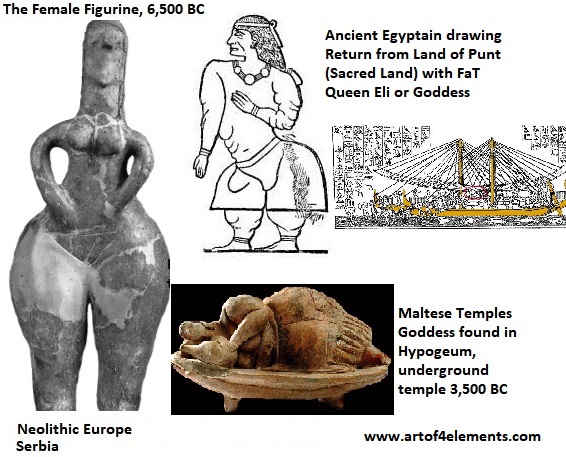
Neolithic Europe The Female goddess 4,700 BC Serbia, Maltese Fat Lady, and Egyptian Queen Eli from the Travel to the Land of Punt
Ancient Europe Neolithics and the Development of Sacred Sounds
A Soul (DuŠa in Slavic) on Its Mystical Journey through Sounds and their Frequencies, is influenced by them, as the name of GoD, any religion will tell you, will influence your Mind.
Researching symbols of Ancient Greek
There is no CH as in Cheese or as in ČoNo in Slavic languages, or Church in English, in the Greek language, so the first translation of any ancient text into the Ancient Greek Θ or ῶ. or Σ or M, got a different sound.
In transcribed Greek names, CH always sounds like K, the Ancient Greek also had a real K (letter Κ κ). At one point of our history, within the Ancient Egyptian, Ancient Hebrew, Ancient Geez, all the names of Gods, influential people, Kings or Phaereos carried the sounds of Ž Đ Č, DŽ or SH, and all the sound rituals were conducted with this magic 111 Hz musical scale.
The Ancient Greek letter X (from Xristos) is named “chi” (Χ χ), The chi is a hard H-like sound as in the English CHaoS, now pronounced as KaYoS. X, hidding the vibration of the Goddess aXeN.
The sacred SH, symbolically represented as the Shiva Lingam, kept its shape within the Cyrilic SH, became W, in English, has changed its form into the Greek Σ, S of the Latin "S" for Spirito Santos, as early as within the translations of the script of the Ancient Greeks, hiding the SH vibration of Isis, the Death, the Underworld, Night, Meditation, MiNoS, Mum, Nirvana, Sex, Subconsciousness, or the YiN of Consciousness that has in the Ancient Europe lost its potency with the loss of the sounds such as X, or Ž, or Đ, or Š, or DŽ, or Č.
The Archeologists about the European oldest Script (6,000 BC) Ancient Script of VinCHa
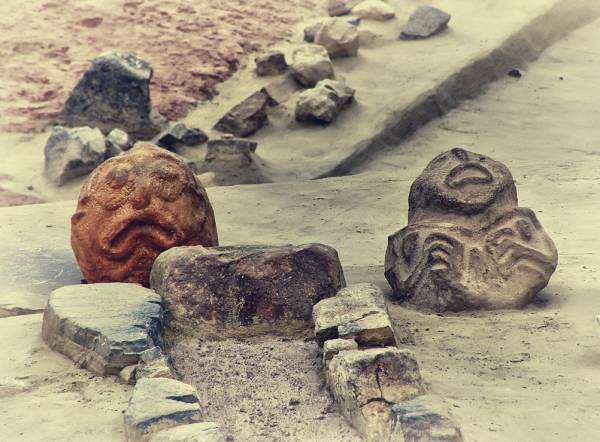
Vincha civilization 6,000-7000 BC archeological remains sculptures Danube Neolithics
The archeological remains found on the Neolithic sites of the Vinča (Serbia) include a script that might have been with us 4,000+ years either as signs / symbols appearing or disappearing in the Mediterranean. Y M H X V W
Interesting for our research are the unique signs, indicating the Church or King's Property, usually identifying the owners: B or Delta or Cyrillic W (sound Sh)
Some also suggest a unique numbering system: 3, 9, 30, or 1 or the female energy that goes “forth” as 1.
and some are the symbols for gods.
Together with filled crosses - matrix, with the “All Visible Matrix” often represented in the Ancient Greeks art symbolism – the Labyrinth.
Foster (1984) observes the continuity of the Paleolithic signs for a female: “W” "SH" that is the symbolism of the Shiva Lingam within the Ancient Egyptian writing:
and for a male = F = PH = PhaRaoH or the male energy that is represented by the 2 lines or through the action of “growth”.
These signs are significant in the Vinča sign system and occur frequently on the Lepenski Vir stone.
The Ancient Greek Christian Orthodox Prayer 200 AC
Going back to the very original sources (Rosetta Stone's Ancient Greek, Egyptian Amarna Letters) de-coding the texts replacing the sounds that were hidden back in time...
Standard edition of the Greek text of the Lords Prayer
The Lord's Prayer (in Greek) on an ancient Papyrus would look something like this ΠΑΤΕΡ ΗΜΩΝ Ο ΕΝ ΤΟΙΣ ΟΥΡΑΝΟΙΣ ΑΓΙΑΣΘΗΤΩ ΤΟ ΟΝΟΜΑ ΣΟΥ ΕΛΘΕΤΩ Η ΒΑΣΙΛΕΙΑ ΣΟΥ ΓΕΝΗΘΗΤΩ ΤΟ ΘΕΛΗΜΑ ΣΟΥ, ΩΣ ΕΝ ΟΥΡΑΝΩ
Ancient Greek, early Phoenician 700 BC, Cyrillic, Script, Sounds, and Names of Gods in art
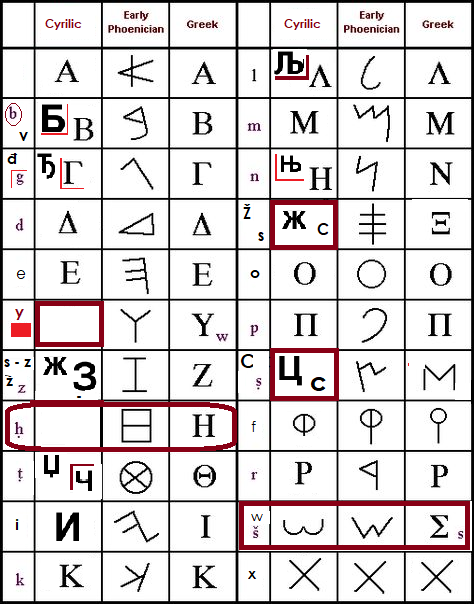
Ancient Egyptian 2,000 BC, Ancient Greek 700 BC, Early Phoenician and Cyrilic
The Lord's prayer is a Christian ritual incorporated in the Holy Eucharist or the Divine Liturgy. For 2,000 years, the traditional education was largely biblical, so we learned of the alphabet, memorizing prayers in either Geez or Ancient Greek.
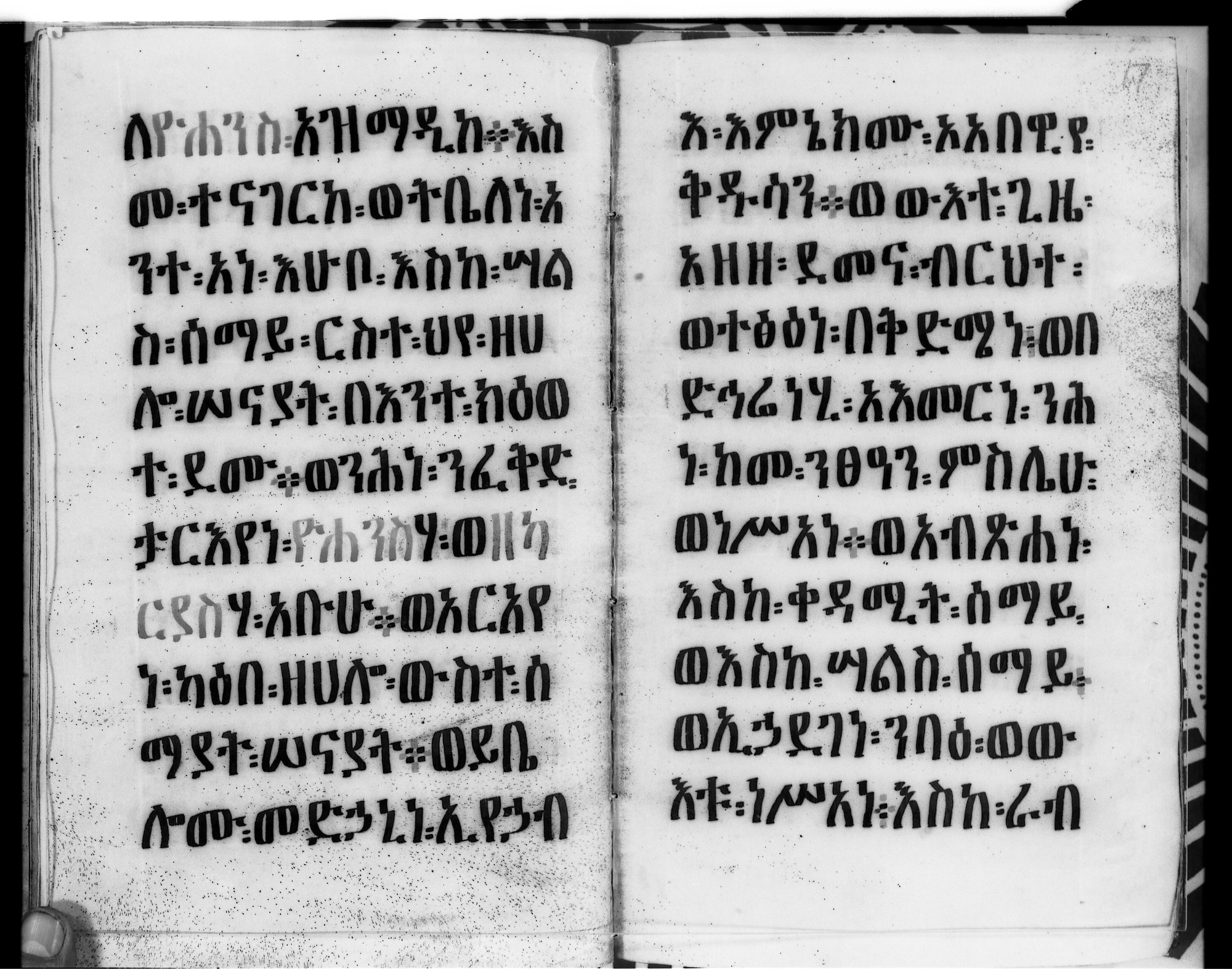
Discourse of John Chrysostom in praise of John the Baptist in Geez 1500 London Collection
The Divine Liturgy by Justin the Martyr
Travelling back in time, to the most ancient descriptions of the order and time of the Divine Liturgy we arrive to the 138 AC and Justin the Martyr, a Christian saint, a well studied man who in his Dialogue tells us of his early education, his theological and metaphysical inspiration coming from the philosophers of Stoic, Pythagorean and Plato schools. He refers to the day, as the day of the sun, the Lord's Day, the day of Kyrios, that is Kyriake, or Sunday, the first day of the week when the Christians have the Liturgy. Interestingly, one of the places that claims his holy relics is the Jesuit's Church in Valletta, in Malta. Brought to Malta in the 15th century, with the remains of other Martyrs Saints, by the Knights, the Crusaiders.
The Balkan Peninsula's rich Neolithic European archaeological heritage shows the importance of this area as a most-likely gateway to Europe for the first European settlers. On the crossroad of the Medditeranean Kingdom, the area has whitnesed the birth of two of the world's greatest civilizations - the ancient Greek and the Byzantine Empire.
The split of the Roman Empire in 395 AD divided the whole region of Anceint Europe into two parts, from Sirmium in the north (Sremska Mitrovica, Serbia) to down south towards the sea. The area is the home to the barbarian tribes which settled in the Balkan: West Goths, the Mongolian and the Slavs were the first nomads to settle here. During 300 years the Peninsula was under the Ottoman Empire.
“Study of Bosch et al, suggested that the populations of the Balkan Peninsula have been shown to be genetically homogenous...” Standing at the Gateway to Europe - The Genetic Structure of Western Balkan Populations, published in August 2014.
ΚΑΙ ΕΠΙ ΤΗΣ ΓΗΣ ΤΟΝ ΑΡΤΟΝ ΗΜΩΝ ΤΟΝ ΕΠΙΟΥΣΙΟΝ ΔΟΣ ΗΜΙΝ ΣΗΜΕΡΟΝ ΚΑΙ ΑΦΕΣ ΗΜΙΝ ΤΑ ΟΦΕΙΛΗΜΑΤΑ ΗΜΩΝ, ΩΣ ΚΑΙ ΗΜΕΙΣ ΑΦΙΕΜΕΝ ΤΟΙΣ ΟΦΕΙΛΕΤΑΙΣ ΗΜΩΝ ΚΑΙ ΜΗ ΕΙΣΕΝΕΓΚΗΣ ΗΜΑΣ ΕΙΣ ΠΕΙΡΑΣΜΟΝ, ΑΛΛΑ ΡΥΣΑΙ ΗΜΑΣ ΑΠΟ ΤΟΥ ΠΟΝΗΡΟΥ. ΑΜΗΝ.
Отче наш, иже јеси на небесјех, да свјатитсја имја Твоје, да приидет царствије Твоје, да будет воља Твоја, јако на небеси и на земљи. Хљеб наш насушчниј дажд нам днес и остави нам долги нашја, јакоже и ми остављајем должником нашим. И не воведи нас во искушеније, но избави нас от лукаваго. Амин.
A Slavic Version of the Lord's Prayer
Using the above rules, we wish to have Θ or ῶ. or Σ or M replaced by the sounds lost in time, hidden by Priests.
The Greek Orthodox Christian Prayer starts with:
Master, give the blessing.
Εὐλόγησον, Δέσποτα.
EloY-SH-SoN or the Blessings of SH, Despota (the Master in Slavic)
one Priest = ἑνὸς Ἱερέως = 1 priest = the Slavic jenos = one; YeReSH-S, the Priest sings as:  YeReSH-S and a litteral translation of this phrase is: “H is Yeres (blasphemy); so the one gives the ως “SH blessing from S = ISIS” = the holly man giving SH blessings to the auditorium” = Priest.
YeReSH-S and a litteral translation of this phrase is: “H is Yeres (blasphemy); so the one gives the ως “SH blessing from S = ISIS” = the holly man giving SH blessings to the auditorium” = Priest.
Priest: Blessed is the Kingdom of the Father and of the Son and of the Holy Spirit, now and forever and to the ages of ages
People: Amen
Ἱερεύς· Εὐλογημένη ἡ Βασιλεία τοῦ Πατρὸς καὶ τοῦ Υἱοῦ καὶ τοῦ Ἁγίου Πνεύματος, νῦν καὶ ἀεὶ καὶ εἰς τοὺς αἰῶνας τῶν αἰώνων.
Λαός· Ἀμήν
In peace, let us pray to the Lord
Ὁ Λαὸς ψάλλει τό Κύριε, ἐλέησον
KiRiYe+SH = blessings to “I” from SH Λαὸς ψάλλει = ShaLoM (SlieMa AlieK oM Marija = Peace to You Mother Marija in Maltese)
Ἐν εἰρήνῃ τοῦ Κυρίου δεηθῶμεν
For the peace from above and for the salvation of our souls, let us pray to the Lord.
Ὑπὲρ τῆς ἄνωθεν εἰρήνης καὶ τῆς σωτηρίας τῶν ψυχῶν ἡμῶν τοῦ Κυρίου δεηθῶμεν.
Λαός· Σοί, Κύριε.
Siii, KiRiJe (bless-me with SH)
People: To You, O Lord.
λόγshος - lóGos “speeCH” + -ησ-ον (an Ancient Greek version of the title of the film Š+Z+N = that would translate to = Š – ŽeNo (a Slavic for a Woman).
Saint SaBBaS / SaWa / SaVa about the Divine Liturgy
A Serbian greatest Saint, who was also a King (read: very educated), has left his Kingdom to set-up a Monastery in Hilandar, now Greece, to leave Mount Athos, this Holy Mount some 7 years later, to go back to his Kingdom building schools, churches, establishing art, educating the people of Serbia.
If you are from Serbia, you will know him by the name of Saint Sava, or SaBBas is the ancient form of this masculine name, or SaWa (the name variation used in Warsaw, Poland) that tell us stories of how B (of Barbarians, the ones who worship “B” as BoG or GoD, have changed this B in to V to be further changed into W, that at one point even hid the real name of WarŠaw).
So, Saint Sava, or Sabbas the Sanctified, the Prince and the first Archbishop of Serbia has left the 11th Century Monastic liturgical manual, teaching monks how to pray for 6 hours daily, early mornings, live semi vegetarian life-style and eat fish only once a week (as Hindus would), pray with their hands up high, greeting God as Jews would, do bows every morning to greet the Lord (very similar ones to the Tibetan bows or Muslim morning prayers), uses these words to describe the Divine Liturgy: “Strašna i Božanstvena, Magična, Moćna” = Horrific, Magic, Powerful Divine Ritual.






The First Language No comments on The First Language: